Global populations of mammals, birds, amphibians, reptiles and fish have undergone an average two thirds decline in the last 50 years, according to the latest Living Planet Report from World Wildlife Fund for Nature (WWF).
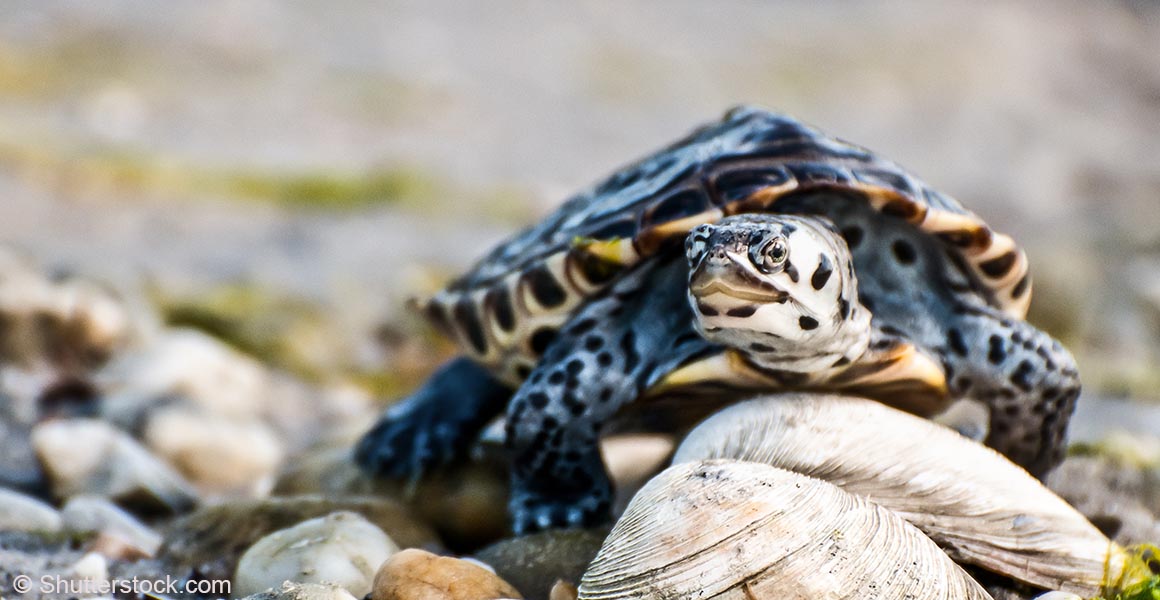
According to WWF's Living Planet report, freshwater habitats severely damaged by human activity. Freshwater is home to a huge range of life, including terrapins, pictured above.
The Yangtze River in China has been home to Chinese sturgeon for 140 million years. Since the time of the dinosaurs, these enormous, shark-like 'living fossils' have been migrating up and down it, travelling about 2,000 miles from the East China Sea to spawn.
The annual journey happened for every one of those 140 million years until the 1980s when the Gezhouba Dam was built, blocking their path. More dams have been built since, and the water has become host to heavy shipping traffic.
This means the population of these prehistoric fish has dropped dramatically, by 97% since 1982. Their future is now in doubt.
The sad story of the sturgeon represents a pattern that's being repeated across nearly every country and continent in the world.
Changes in the way we use land and water, and the global wildlife trade, are leading causes of massive declines in wildlife populations. These declines are further evidence that we are witnessing a planetary emergency.

Plants are the foundations of virtually all land-based ecosystems - but they too are facing declines. Image courtesy of pikistopens in a new window.
The Living Planet Report
The WWF's Living Planet Reportopens in a new window provides an insight into the health of our planet. It is based on contributions from more than 125 experts and includes an index which tracks trends in the abundance of global wildlife.
The outlook is bleak: wildlife populations across the board are dwindling. This is largely due to the same environmental destruction which is contributing to the emergence of diseases like COVID-19.
Nature as we know it is fundamental to human life on Earth - we rely on it for food, fresh water and clean air. But it's being destroyed at a faster rate than ever before in human history.
Marco Lambertini, Director General, WWF International says, 'We can't ignore the evidence - these serious declines in wildlife species populations are an indicator that nature is unravelling and that our planet is flashing red warning signs of systems failure.
'From the fish in our oceans and rivers to bees which play a crucial role in our agricultural production, the decline of wildlife directly affects nutrition, food security and the livelihoods of billions of people.'
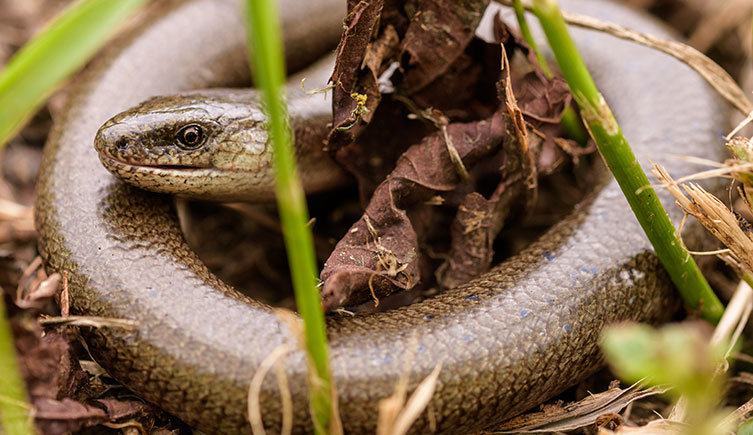
Nature can provide us with healthy places to live and enough food to feed everyone - but we have to look after it. © Pedro Luna/ Shutterstock.com
The numbers
The report used data from 4,392 species in 20,811 populations to examine the population sizes of animals all over the world.
On average, there was a 68% decline in populations between 1970 and 2016. This number reflects the average proportional change in animal population sizes, not the number of individual animals lost.
Wildlife populations found in freshwater habitats fared the worst, suffering a drop of 84%.
The index tracking these declines was completed by the Zoological Society of London (ZSL)opens in a new window.
Dr Andrew Terry, ZSL's Director of Conservation says, 'An average decline of 68% in the past 50 years is catastrophic, and clear evidence of the damage human activity is doing to the natural world. If nothing changes, populations will undoubtedly continue to fall, driving wildlife to extinction and threatening the integrity of the ecosystems on which we all depend.
'But we also know that conservation works, and species can be brought back from the brink. With commitment, investment and expertise, these trends can be reversed.'
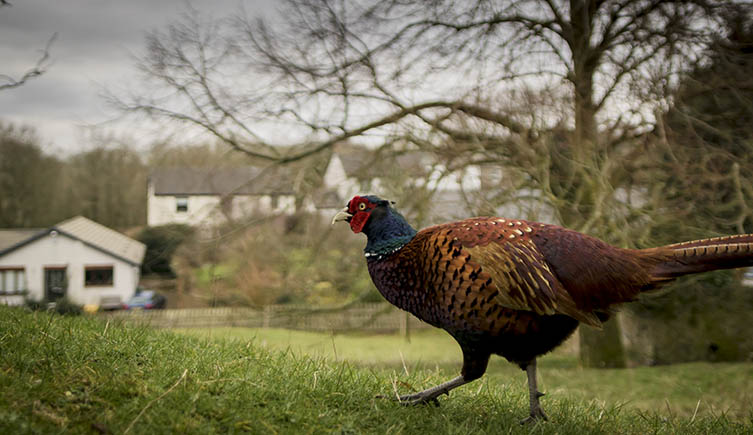
Farming can do a lot of damage to animals and plants. In the UK, a lot of wild habitats have been cleared over the last century to make way for industry and agriculture.
The causes
Species population trends are important because they reflect the overall health of Earth's ecosystems, or biodiversity - the variety of all life on Earth.
Biodiversity loss is caused by a series of complex and interlinking factors, including:
- changes in the way we use the land and sea
- the exploitation of animals and plants
- invasive species
- pollution
- climate change
Research shows the largest contribution to biodiversity decline is agricultural farming.
Agriculture changes vast expanses of land, transforming it from wilderness to farmed space for domesticated animals and plants.
The destruction of natural habitat leads to a reduction in genetic diversity, reducing a species' ability to adapt to a changing environment.
Agriculture also degrades the soil, depletes and pollutes the water, adds to greenhouse emissions and produces untold amount of toxic waste.
The future
Modelling work shows that we are in danger of witnessing even worse declines unless we change our behaviour.
New research undertaken by the Museum and several other international organisations predicted what the natural world will look like in decades to come. This has been published in the journal Natureopens in a new window.
Professor Andy Purvis, Museum research leader and Adriana De Palma, post-doctoral research associate, established an open-access data base called PREDICTS. It allows scientists all over the world to share their research on local biodiversity.
PREDICTS models how human activities affect nature all over the world, now and in the future. The picture it paints is a shocking one.
Andy explains, ‘The models are very clear. The way we are going is not sustainable. Carrying on like this will mean more biodiversity loss, more deforestation and more species going extinct.'
Using ecosystems unsustainably isn't just bad for biodiversity. People depend on what ecosystems provide, so running them down can cause famine, mass migration, political instability, and global recession.
Andy says, 'We've already seen the magnitude of crop failures increasing in some regions. These negative consequences are not far down the line.'
However, all may not be lost. Using the PREDICTS database, scientists modelled several possible future outcomes, forecasting how wildlife will react to changes we make now, and it's not too late to change course. It is still possible to stop biodiversity loss at the same time as making sure there’s enough food for everyone, provided we tackle the biggest problems with how we manage land.
As the biggest cause of biodiversity decline, changing the way we farm and eat food is crucial, starting with reducing our meat consumption.
Adriana says, 'A meat-based diet leads to massive amounts of animal production and doesn't feed as many people in a nutritionally balanced way as having a plant-based diet.'
The solution is to farm in a sustainable manner so we can continue feeding people without damaging the environment. The issue is a highly complex one where different industries are interlinked and work in synergy. A disruption in one area most certainly will have consequences on other areas.
Adriana says 'There is no single solution. It requires a combination of different policies put together for us to achieve the outcome we need.'
Other changes that need to be made includes increasing conservation, such as extending the range of protected areas and restoring land that has already been degraded.
What's more, the effects of climate change are not included in this study. This means the issues listed in the research is based on human actions only, and climate change will only aggravate the problems further.
Andy says, 'The Museum is an institution which is concerned about the state of the natural world and our place in it. That's why we worked on this paper and on the Living Planet Report. They both clearly show that the planetary emergency declared by the Museum is indeed real.'
How to help biodiversity
There is a lot an individual can do to make a difference.
We can choose to be more conscious about our own choices and actions. For example, purchasing sustainable products or only buying what we need.
Andy says, 'There's more public awareness of environmental issues than there was five years ago and it's becoming easier for businesses to take that ethical and sustainable stand. And this forces big brands to clean up their act too.'
The way we manage waste is another way of tackling biodiversity loss.
Adriana says, 'A lot of people don't recognise waste when they see it. In the UK, there is an obsession with having perfect produce.
'Fruits and veg that are a little bruised get thrown away when they contain as much nutrition and are perfectly edible.'
Buying imperfect produce helps reduce waste overall, and as they tend to be a little cheaper, saves people money.
Andy says, 'We need to keep pressure on our politicians to show them we care. Our studies suggest that if we have representatives who rise to the occasion and be the leaders we need, we can overcome this great challenge.'
Adrianna says, 'It's always interesting for us to come together with an international group of scientists to work on a project, especially one as life-changing as this.
'We're always hoping politicians will do the same - mimic what we've done and come up with solutions for the problems we have.'
So while the research offers us a lifeline, it comes with a condition. We can avoid the death of nature and the planet as we know it, but we must all act now.

Feeling inspired?
You can help too. If we act together, we can make a positive difference. Here's how to do your bit to protect nature.
More information
- Read the Living Planet Report 2020 on the WWF websiteopens in a new window.
- Read the research paper in the journal Nature: Bending the curve of terrestrial biodiversity needs an integrated strategyopens in a new window.
- Find out more about the PREDICTS project.

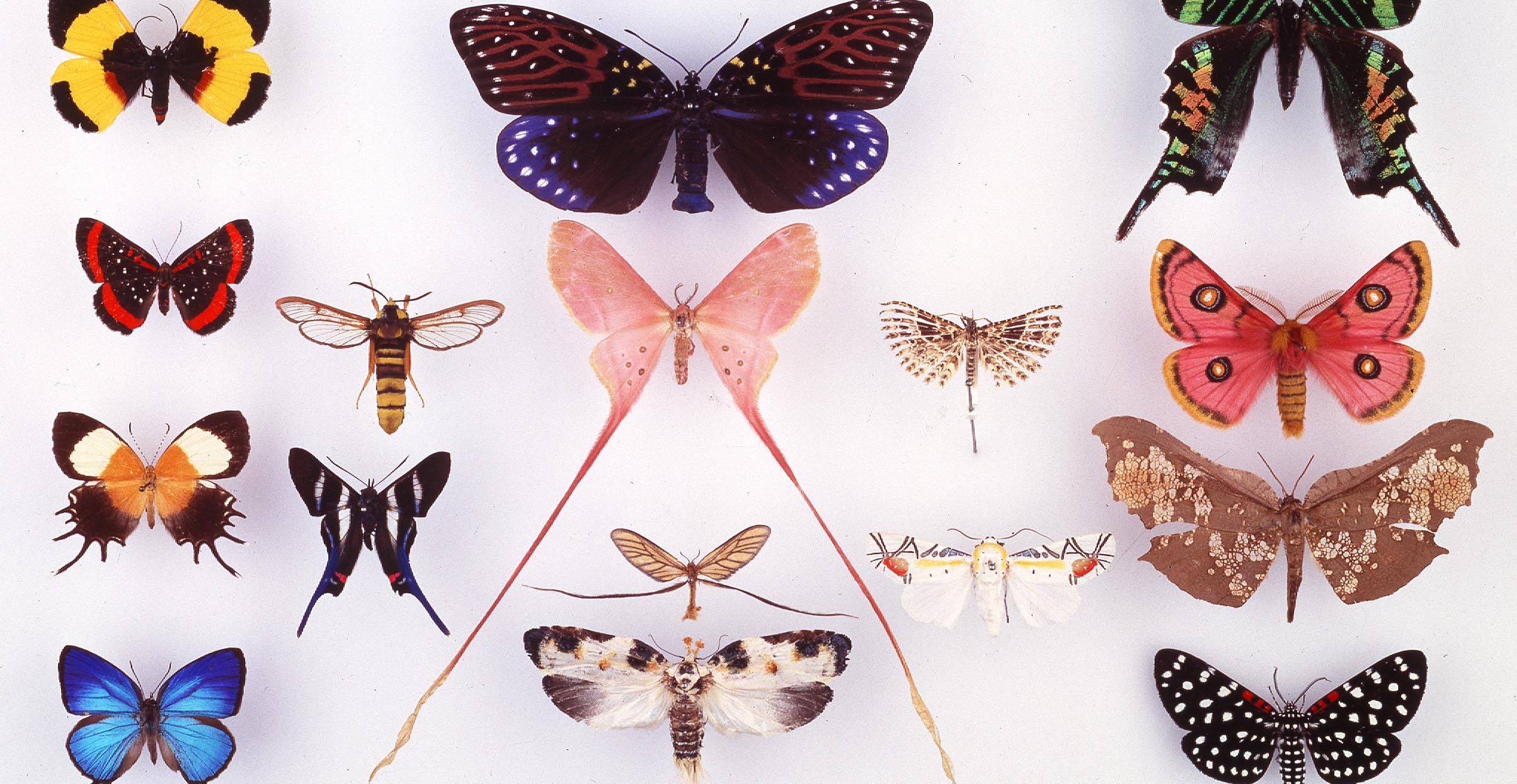
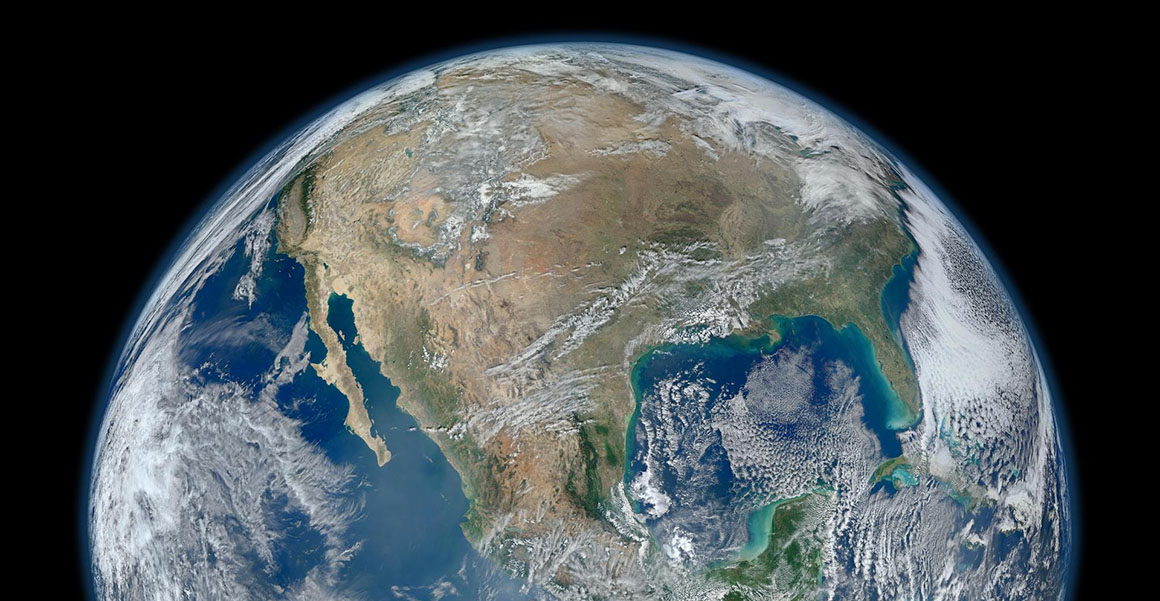
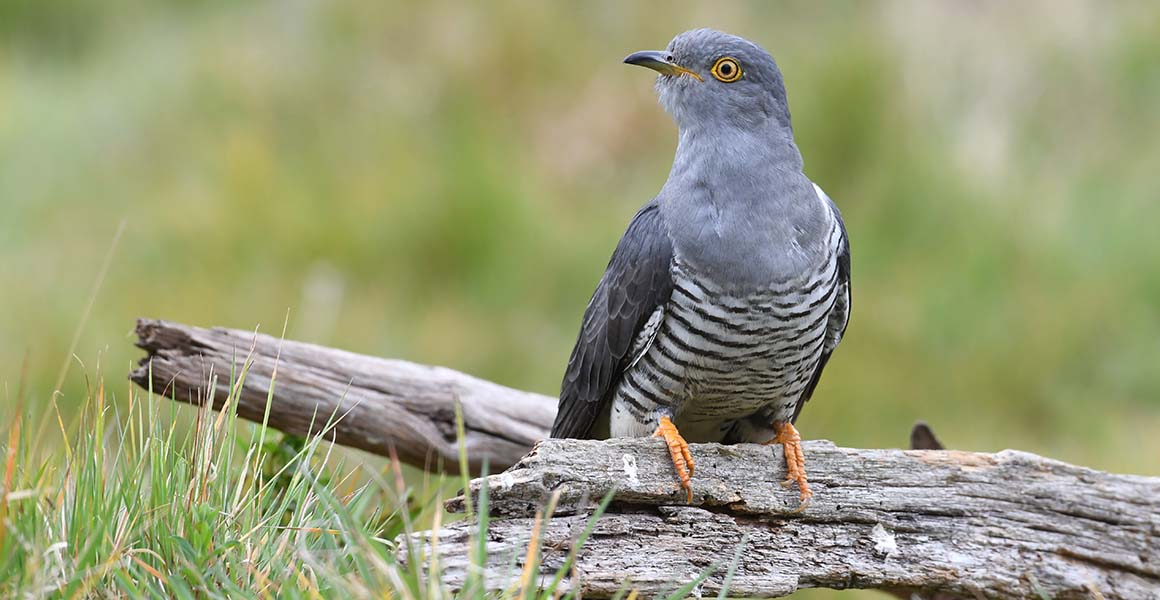
Don't miss a thing
Receive email updates about our news, science, exhibitions, events, products, services and fundraising activities. We may occasionally include third-party content from our corporate partners and other museums. We will not share your personal details with these third parties. You must be over the age of 13. Privacy notice.
Follow us on social media